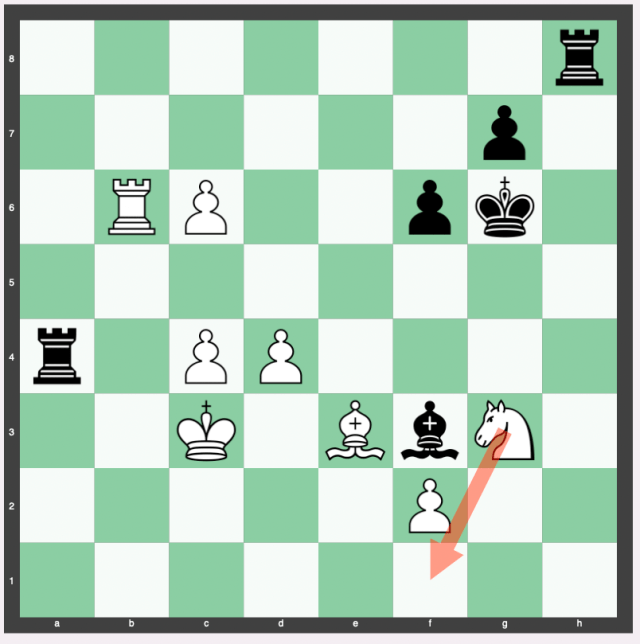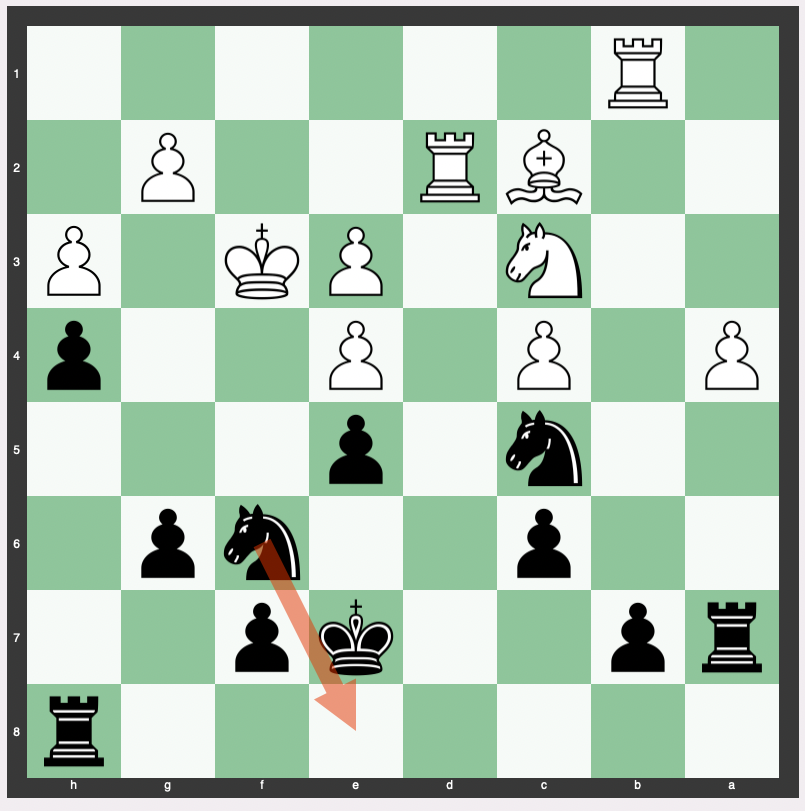One of the most intriguing moves in chess is the knight’s ability to re-route its path, allowing it to navigate the board in a unique and unexpected way.
In chess, rerouting the knight typically involves moving it to a different, more advantageous position on the board to either facilitate an attack or strengthen defense, utilizing its unique L-shaped move pattern.
Below we look at meaning behind the concept of “re-routing the knight” in chess and how it can be applied to our lives.
The Knight’s Move: A Unique Path
In chess, the knight holds a distinctive place owing to its unique movement pattern, which is an L-shape; it can move to any of the squares immediately adjacent followed by a perpendicular turn to step onto a new square, or vice versa.
This peculiar movement allows the knight to jump over other pieces, making it a versatile tool in the hands of a strategic player.
Re-routing the knight, therefore, is a tactic where a player may choose to relocate the knight to a more favorable position on the board, optimizing its potential in the unfolding game.
This maneuver can be a part of a larger strategy to bolster one’s defense or to craft a nuanced attack against the opponent.
It’s not uncommon to see players repositioning their knights to control critical squares, create tactical opportunities, or to collaborate more effectively with other pieces on the board.
This re-routing strategy, when employed judiciously, can potentially alter the dynamics of the game, paving the way for a decisive advantage and a step closer to victory.
Example of Re-Routing the Knight
Below, black recognizes that it’s knight on f6 is misplaced due to the nature of white’s position.
It’s neither defending anything nor attacking anything, so it needs a new position on the board.
Given white’s domination over the d-file, black needs to get its knight on the d6 square instead, which can attack the c4 and e4 pawns.
This will prevent the white rook from inflitrating. It’s protected by the black king.

If white forms a battery by stacking rooks and trying to prevent the re-routing, black can protect by shifting its a7 rook to a8, planning d8, to have sufficient protection.
This will then allow black to place its knight on d6.

Later on in the game, we can based on how the position shakes out that black takes the material advantage by taking e4 while checking the white king.

When the king backs out of check, the e3 pawn will fall too.
Example #2 of Re-Routing the Knight
Here we have another example of re-routing the knight.
At one point in the game, the knight on g3 made sense.
But now with white’s passed pawns on the other side, the resources are needed over there to protect these pawns.
So white wants to take the knight from g3 to f1 to d2 to provide protection for the c4 pawn and potentially to block checks on the white king.

And now to d2:

The re-routed knight ends up being a key player in getting the pawns to promotion.

The formerly weak knight enables white to turn the top c-pawn into a new queen, or essentially exchange a pawn for a bishop, gaining two points of material.

FAQs – Re-Route the Knight in Chess (Meaning)
1. What does “re-route the knight” mean in chess?
In chess, “re-routing the knight” refers to the ability of the knight piece to change its path and navigate the board in an unexpected way.
It represents the concept of adaptability and finding alternative routes to achieve strategic goals.
2. How does re-routing the knight relate to real life?
The concept of re-routing the knight in chess can be applied to real life by encouraging us to think creatively, plan strategically, and adapt to changing circumstances.
It emphasizes the importance of flexibility and resilience in navigating through life’s challenges.
3. What are the benefits of re-routing the knight in chess?
Re-routing the knight in chess can surprise opponents, create new opportunities, and give players a strategic advantage. It allows for unexpected moves and opens up possibilities that may not have been initially apparent.


